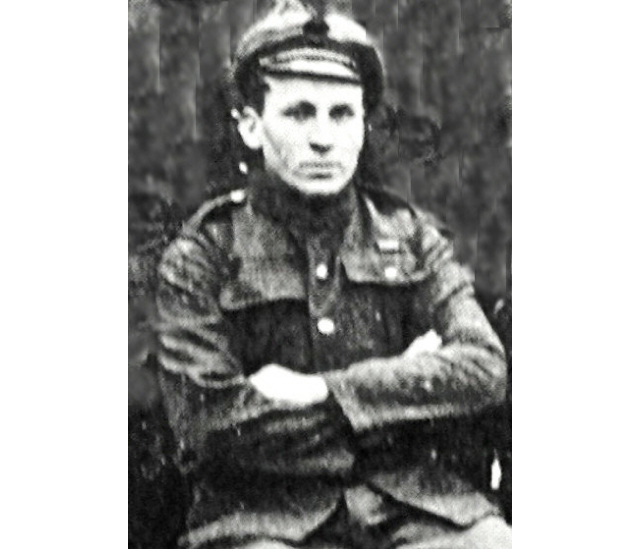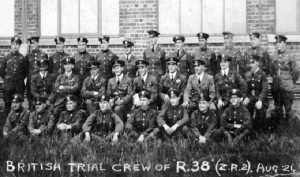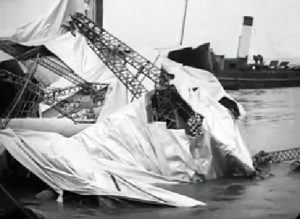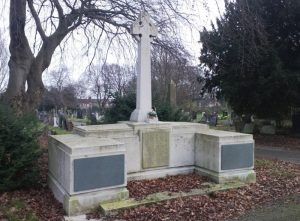Eric Edward Steere was a courageous young man determined to serve his country, enlisting when just 15 years old.
He was born at 37 Gloucester Place, Worthing, Sussex on 22 February 1900. He was the sixth of eight children of James Blann Steere a carpenter and joiner, and Emily Alice nee Butcher. When he was fifteen his elder brother, Able Seaman Archibald George Steere, born 11 August 1894, was killed in action when his vessel HMS Lynx struck a mine off Moray Firth, Scotland on 9 August 1915.
This made Eric determined to enlist despite being under age. On 25 January 1916, a month before his 16th birthday he enlisted at Shoreham in the Queen’s Own Royal West Kent Regiment. Private Eric Edward Steere gave his age as 18 years 13 days. It is recorded that he was 5ft 7 ins tall, chest 37½ ins, hair fair, eyes grey and complexion fresh. He gave his occupation as a Student at Naval College.
However, after just 64 days he was discharged on 28 March 1916, the reason given was – ‘Soldier under 17 years of age on application’. Still determined to join up he tried unsuccessfully to enlist in the Royal Navy but was told he must wait until he was of a proper age.
On his 17th birthday he enlisted in the Royal Navy as a Boy Mechanic giving his occupation as TS ‘Mercury’ a shore based training ship on the Hamble, Hampshire. He was stationed on what were termed stone frigates, Royal Naval land bases. Whilst stationed at ‘Daedalus’ (Cranwell) between 20 June and 30 September, he was thrown out of a seaplane over the North Sea and was rescued after spending several hours in the water.
He moved to Eastchurch, Kent from 1- 31 October, then to Yarmouth, Norfolk from 1 November – 17 November. He arrived at the Royal Naval Air Station Polegate, in Willingdon, on 18 November 1917. Just over a month after his arrival he was involved in the fatal airship accident that occurred at Willingdon Hill on top of the Southdowns, 20 December 1917. For his bravery in removing injured crew to safety and returning to remove dangerously heated bombs from a blazing airship he was awarded the Albert Medal in gold.
He was presented with his medal on 6 March 1918 at Buckingham Palace by King George V. Eric was still only 17 years at the time of the airship disaster and must be one of the youngest ever to receive this award.
He continued in the Royal Naval Air Service until 31 Mar 1918, when he was discharged from the Royal Navy and redeployed to the newly named Royal Air Force. He continued to fly in airships for the duration of the war.
After the war Eric remained in the Royal Air Force attaining the rank of Aircraftman 1st Class and continued flying with airships. On 5 April 1921, he was on board the R36 flight for demonstrations over Salisbury Plain when manoeuvres in turbulence caused the top rudder and starboard elevator to crumple. After a dramatic loss of altitude the ship adopted a severe nose down angle. They finally limped back to Pulham, Eric describing the day’s events as ‘exciting difficulties’.
Just four months later on 23 August 1921 he was one of the joint British and American crew on the fateful flight of the ridged airship R38. The R38 had been sold to the United States Navy in October 1919 even before its completion. It was during this, its fourth flight, that disaster struck over the sea. Having reached 62mph it carried out tight turns close to the estuary of the river Humber.
The tragedy was witnessed by thousands on a warm summer’s evening as the airship was seen to crease and buckle amidships, breaking its back, exploding in mid-air, the force shattering windows in the city. Of the forty-nine crew on board only five survived and Eric was among those killed. Despite his years of experience on airships, Eric was still only 21 years old, the same age as Archibald his brother when he had been lost at sea in 1915.
As with Archibald, Eric’s body was never recovered, one of four crew to remain missing at sea. The R38 was the world’s largest airship and this was to be the first of the great airship disasters. Eric Steer’s name is inscribed on the memorial to those lost in the R38 disaster in Hull Western Cemetery. He is also named in the Commonwealth War Graves Commission records.
This story was submitted by Rosalind Hodge, Archivist, Willingdon Parish Church











